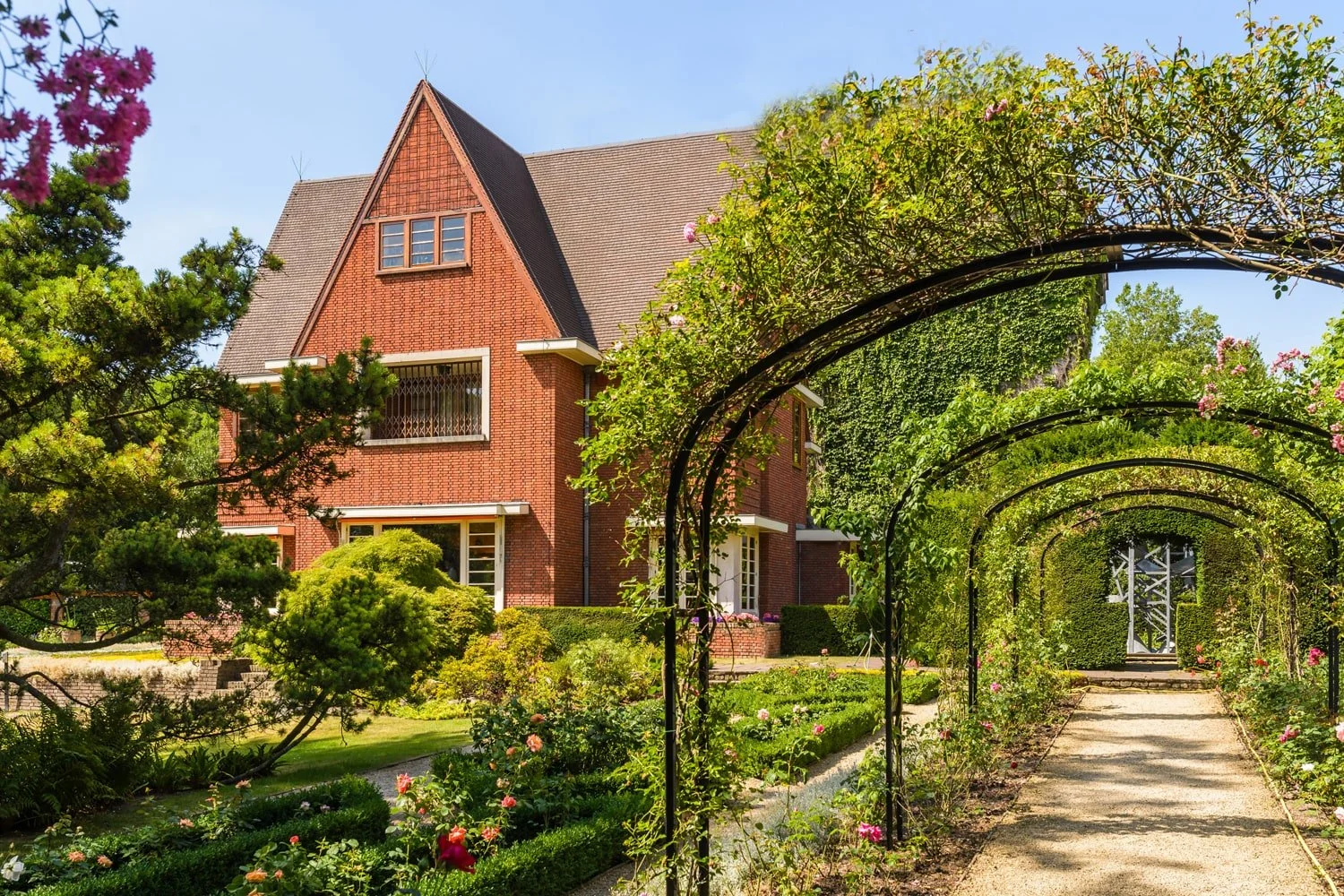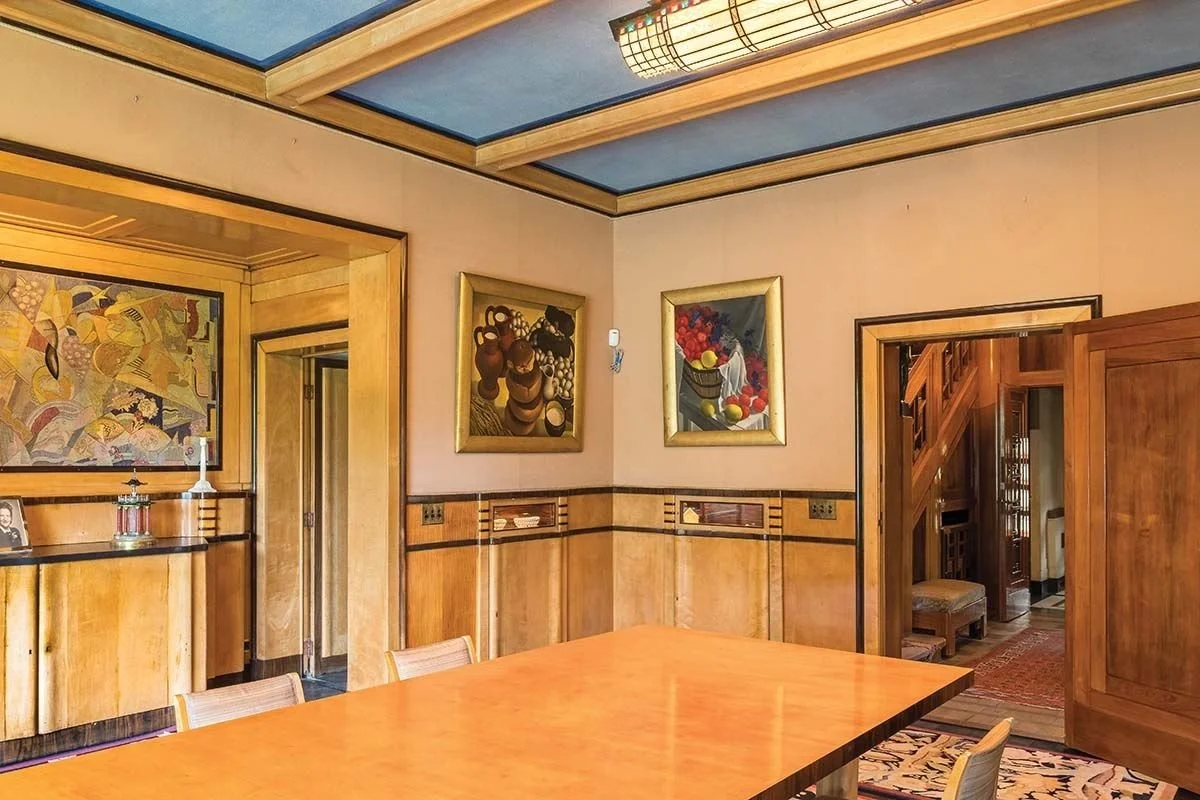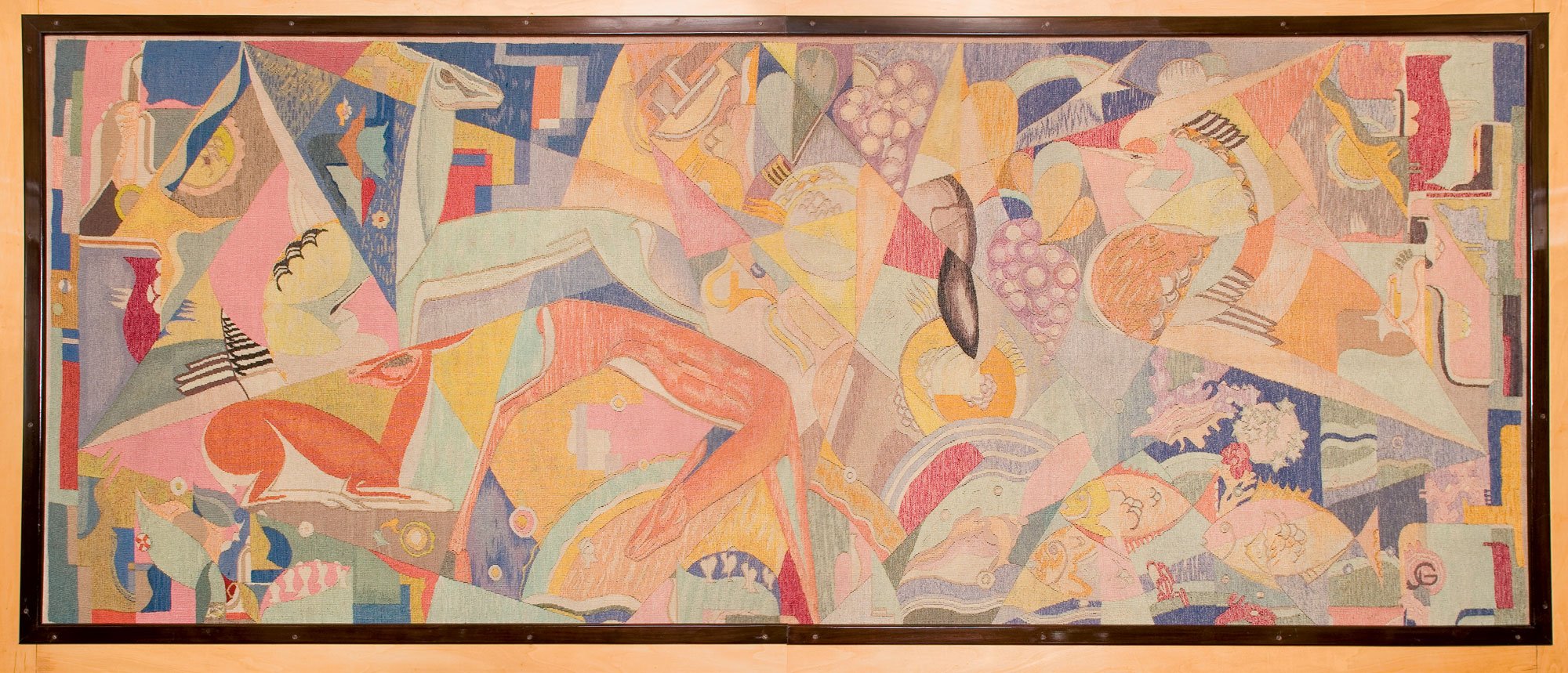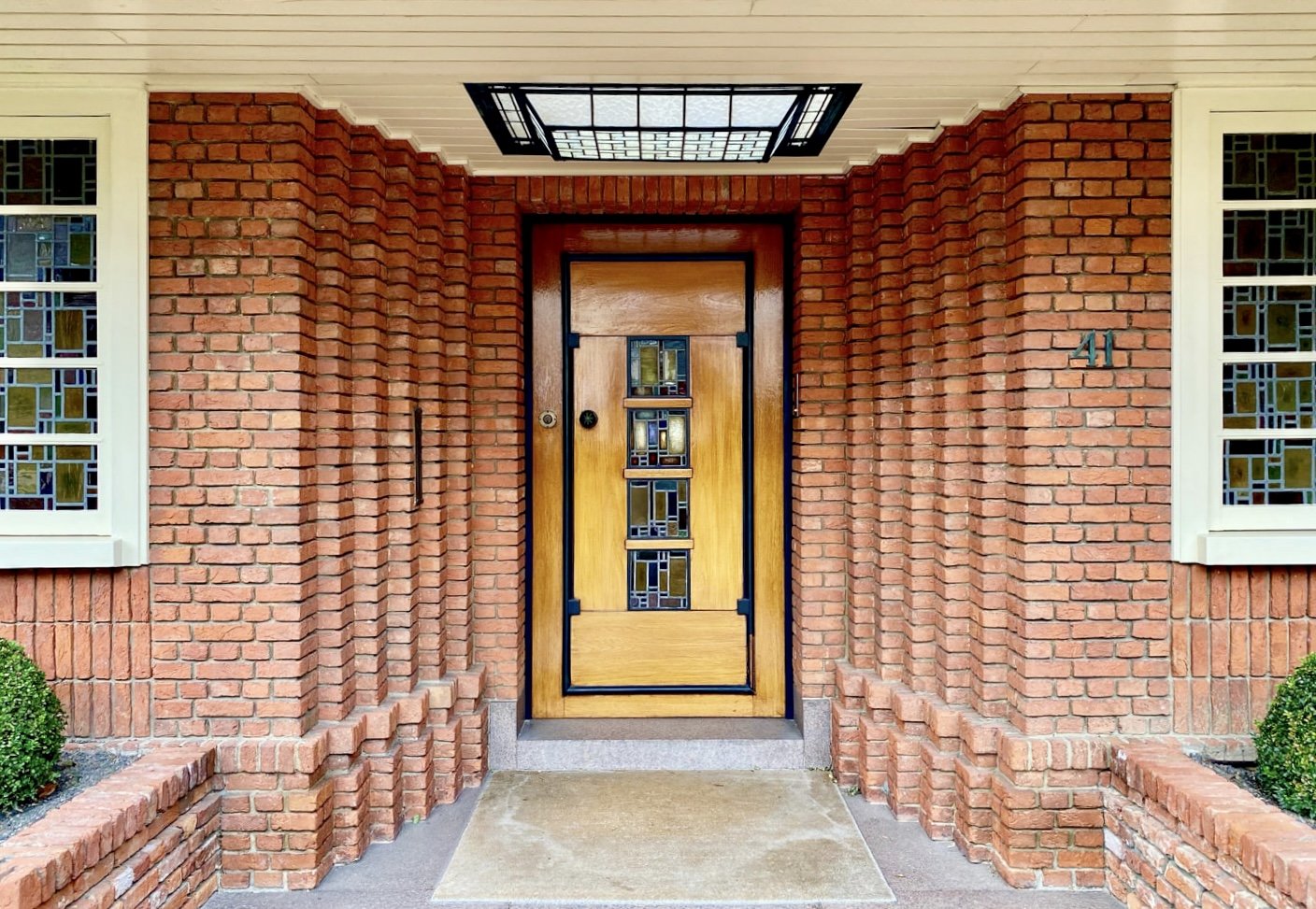VAN BUUREN MUSEUM
I recently visited the Van Buuren Museum in Brussels and thought it would be the perfect subject to write about; an Art Deco haven brimming with the work of many notable 20th century designers.
The house, situated in the ritzy residential Uccle area of Brussels, was home to Alice and David Van Buuren from 1928 to 1973. Today you can walk through the house and admire the collections of furniture, textiles and paintings bequeathed by Alice before her death. Disposable plastic shoe covers aside, it doesn’t feel as though you’re walking through a museum, but the couple’s vibrant home.
David and Alice Van Buuren. Image credit: Museum Van Buuren.
The Van Buuren Museum as seen from the rose garden. Image credit © Jean Paul Remy
After marrying in 1922, Alice and David purchased the 12 acre plot of land and set about designing their utopian home. David (a wealthy banker, as well as a patron of the arts) drew up the plans himself, with help from his architect nephew, Johan Franco. The exterior of the house is in the style of the Amsterdam School - an Expressionist architecture style typified by red brick and decorative masonry. The building appears relatively modest however, when compared with the opulence within.
In search of inspiration, David took a reconnaissance trip to the 1925 Exposition Internationale des Arts Décoratifs et Industriels Modernes in Paris. The world’s fair was held to flaunt and celebrate all that was new in the decorative arts and design, and is often heralded as the birthplace of Art Deco. Here David hobnobbed with esteemed designers of the day, including Parisians André Domin & Marcel Genevriere of Maison Dominique, whom he commissioned to produce a range of furniture for the new house. Clearly no expenses were spared; the Dominique pieces that fill the three living rooms include a plush daybed of rosewood and Kabyle silk velvet, a roll-top desk of Jerusalem sycamore, and a grand piano encased in rosewood (exotic woods were all the rage).
The 'black sitting room', featuring rug and curtains designed by Jaap Gidding in the 1920s. Image credit © Ronny Harnie.
Left: Daybed with cushions by Sonia Delaunay and Jaap Gidding.
Right: a reading area of the living room, with furniture designed by Maison Dominique.
But it’s the technicolour textiles that bring this house to life. Dutch designer Jaap Gidding designed the large rugs that cover the living rooms, as well as an arresting tapestry on the dining room wall. Whilst the Music Room rug employs Cubist abstract shapes, the rug in the Black Sitting Room is almost psychedelic with its swirling pinks and greens. Woven cushions designed by Sonia Delaunay sit happily on the rosewood daybed.
But my favourite textiles are the rugs that fill the dining room, designed by Maurice Dufrêne (another darling of the Paris Art Deco scene). This set of five woven rugs, named The Botanical Gallery, burst with joyful florals and stars set against a black ground, reminiscent of Atelier Martine.
Close up of The Botanical Gallery rug, designed by Maurice Dufrêne in the 1920s.
The dining room, with wooden cabinetry by Joseph Wynants and rugs by Maurice Dufréne. Image credit Ronny Harnie.
Large tapestry designed for the dining room by Jaap Gidding. Image credit © Van Buuren Museum.
The couple clearly enjoyed a coterie of distinguished friends. They entertained many celebrities and artists at their home, including Raoul Dufy, René Magritte and Christian Dior. Imagine attending one of those 1930s garden parties!
The carefully designed gardens are also a treat. After David’s death, Alice asked renowned landscape architect René Pechère to design her a serpentine maze (in which we found ourselves quite lost). She also commissioned the ‘Garden of the Heart’ - a charming garden of carefully manicured heart-shaped bushes - apparently a tribute to her late husband.
The Van Buuren house displays a wonderfully unique blend of many Continental design styles, from Art Deco to Art Nouveau, the Amsterdam School to Arts & Crafts. What struck me as I walked through was how rare it is to see such interiors in their full chromatic glory. Photographs of Modernist interiors are invariably in black and white, so it’s fabulous to see these rooms brought to life with colour.
If you're planning a trip to Brussels and keen to see the Art Deco and Art Nouveau buildings, this website is a great place to get an itinerary together.
Front door to the house made of Brazilian rosewood, with stained glass windows by Jaap Gidding.










